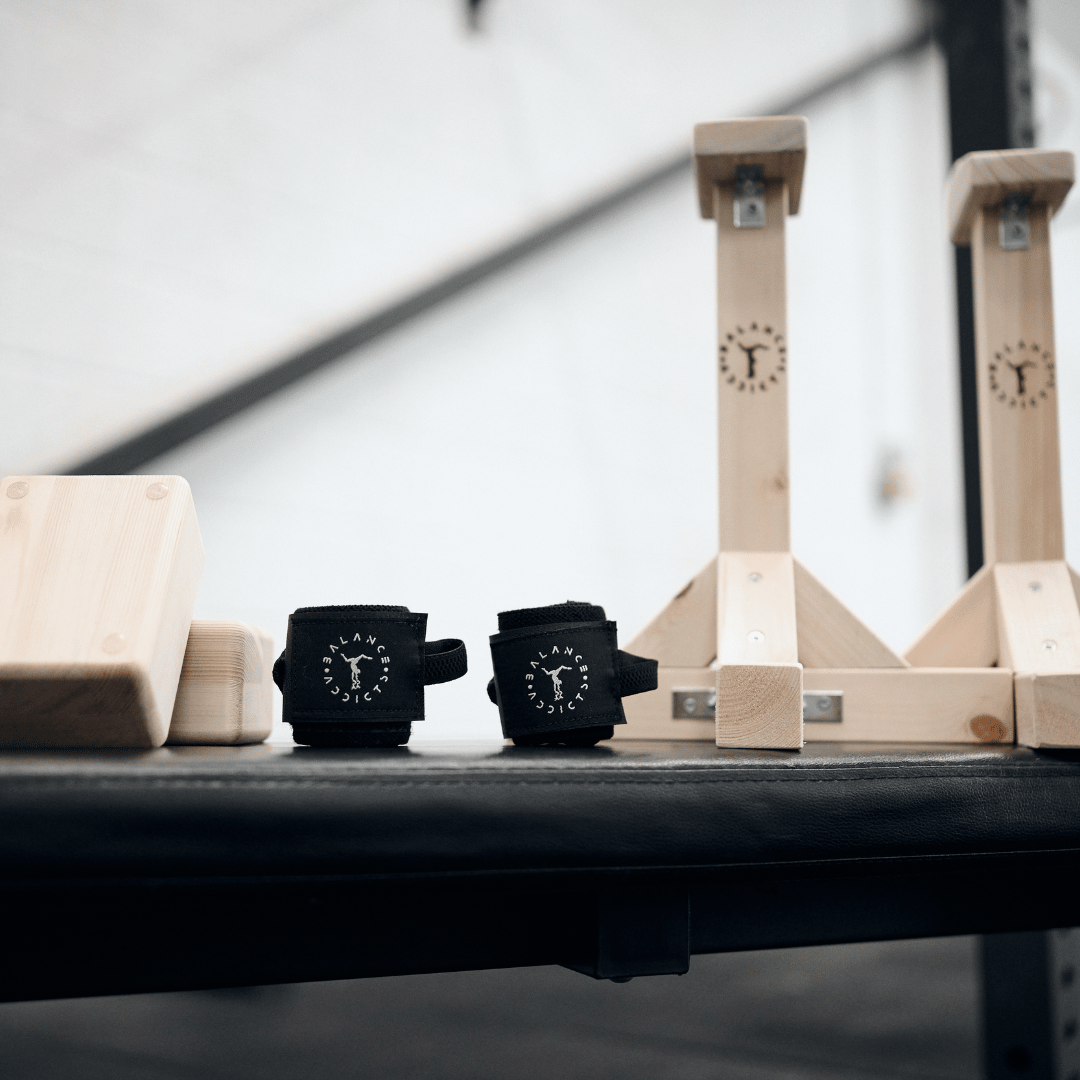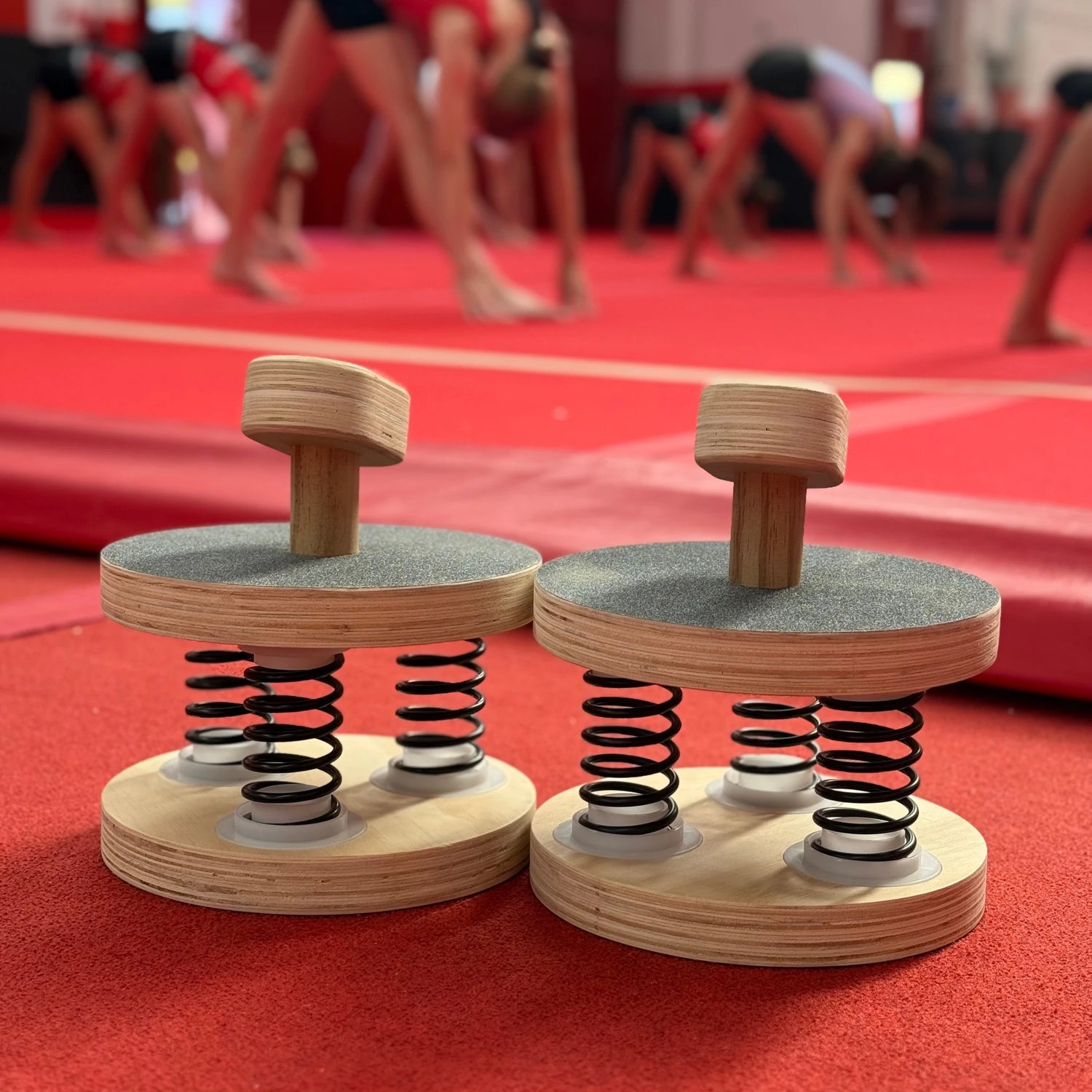
15 Types of Gymnastics Apparatus - The Ultimate Equipment Guide
|
|
Time to read 4 min

Check out our exciting new balance product launches. Developed and tested by...
|
|
Time to read 4 min
Gymnastics is a sport that combines strength, flexibility, and artistry. To excel in this discipline, athletes rely on building a range of strength, mobility and balance movements. These areas can be developed by utilising a variety of specialised equipment and gymnastics apparatus.
This guide explores the essential gymnastics apparatus available to boost your gymnastics ability, providing technical details and insights into their use in training and competition.
Below we have laid out the 8 most impactful pieces of gymnastics apparatus. Each one has an overview, the technical details of the apparatus and how to use the gymnastics apparatus specifically - enjoy!
The uneven bars, essential in women’s artistic gymnastics, consist of two bars set at different heights.
The low bar and high bar are used to perform acrobatic elements and transitions that showcase the gymnast's upper body strength and coordination.
Good Grip: Bars are made from materials that provide a good grip to prevent slipping during routines.
The uneven bars are used extensively in FIG competitions and are a highlight in world championships. Training on uneven bars involves developing skills like kips, swings, and releases.
The balance beam is a narrow apparatus used in women’s gymnastics to perform routines that include acrobatic and dance elements. It requires immense balance and precision.
Length and Width: The beam is typically 5 meters long and 10 cm wide.
Height Adjustment: Can be adjusted to different heights for training and competition.
Safety Padding: Essential to prevent injuries during falls.
Used in both training and competitions, the balance beam helps gymnasts develop balance and coordination. Routines on the beam are judged based on the execution of skills and artistic presentation.
The pommel horse is primarily used in men’s gymnastics . It involves performing continuous circular and scissor movements with the legs while supporting the body with the arms. When mastered, it is an incredible piece of gymnastics apparatus.
Handles: Two pommels or handles are placed on top for the gymnast to grip.
This gymnastics apparatus is known for being particularly challenging due to the strength and technique required. It is a staple in gymnastics competitions and essential for developing upper body and core strength.
The parallel bars are another item of gymnastics apparatus used in gymnastics competitively. Gymnasts perform swings, balances, and flight elements between two parallel bars.
Height Adjustment: Bars can be set to different heights for various skill levels.
Material: Bars are typically made from wood or synthetic materials for durability and grip.
Training on parallel bars helps gymnasts build upper body strength and coordination. This apparatus is also featured in major competitions like the world championships.
The horizontal bar, or high bar, is used to perform high-flying release moves and giant swings. It’s important to build up to this item of gymnastics apparatus gradually, starting lower down and with qualified coaches providing direction.
Construction: Made from steel for strength and durability.
The high bar requires a combination of strength, timing, and courage. It is featured prominently in competitions and is a key element in the men’s all-around event.
"Gymnastics is about setting goals and achieving them."
The floor exercise is a performance on a sprung floor, combining tumbling, acrobatics, and dance.
Padding: Equipped with safety padding to absorb impacts.
Both men and women compete in floor exercises, which are judged on the execution of skills, artistic elements, and overall presentation. It's a critical part of modern gymnastics and one of the most commonly used pieces of gymnastics apparatus.
The vaulting table is used in both men’s and women’s gymnastics to perform vaults that include powerful run-ups, springboard jumps, and flips.
Safety Padding: Includes ample safety padding to ensure safe landings.
Vault tables are used in competitions and training to develop explosive power and precision. They are an integral part of gymnastics competitions.
The still rings are used in gymnastics to perform strength and hold elements, as well as dynamic swings and dismounts. Professionals will make this piece of gymnastics apparatus look easy, but it can take months and years of practice to perform some of the skills possible on
Material: Made from wood or synthetic materials for durability.
Gymnastics rings require tremendous upper body and core strength. They are a staple in men's gymnastics competitions and crucial for developing muscular endurance and control.
Below is another selection of gymnastics apparatus. These are smaller in design and require less room, they could be great choices for home training or gifts.
1. Training mats and foam pits provide a safe environment for gymnasts to practice new skills. They are essential for reducing the risk of injury during training.
2. Rhythmic Gymnastics Equipment: Includes ribbons, hoops, and balls used in rhythmic gymnastics.
3. Pommel Horse Handles: Additional handles can be attached for different training purposes.
4. Hard Foam Block: Used for various training exercises to improve strength and technique.
Having the right gymnastics equipment is essential for skill development and safety. From the balance beam and uneven bars to the vaulting table and pommel horse , each item of gymnastics apparatus plays a vital role in a gymnast’s training regimen.
Investing in high-quality gymnastics apparatus from reputable suppliers like American Athletic ensures durability and the best experience for gymnasts at all levels. Whether for training purposes or FIG competitions , the right gymnastics apparatus helps gymnasts reach new heights in their performance.







